Olympus E-PL7: learn how to do state employees | Part 1
Hi, Geektimes! Not so long ago, we discussed mirrorless cameras on the example of Nikon One : then the camera was more like a soap box with interchangeable lenses, good photo quality and some creative possibilities than a SLR with a mirror torn from it.

In fairness it is necessary to restore the balance. Today our guest is the Olympus Pen E-PL7 Kit . After entering the market at the end of last year, it became one of the mass models of the company and earned a good reputation among professional photographers and not only. Excellent retro design, excellent ergonomics, a common format for Micro 4/3 lenses. A good claim to success? So check it out.
In essence, the novelty is in many ways similar to the previous model of the ruler, but at the same time it has a number of very interesting features, which speaks of it as a self-valuable device. If we evaluate the improvements purely in terms of ergonomics and qualitative changes, then first of all you need to talk about the new screen. The camera received a rotatable (270 degrees) touchscreen display, which is extremely usefulwhen taking selfies at all kinds of concerts and in general in uncomfortable positions. Another nice bonus is the Wi-Fi module for quick transfer of the taken pictures to other devices and to the network. Also, the camera, like previous models, is equipped with the function of recording Full HD video (with a resolution of up to 1920 * 1080 pixels), but the maximum bit rate has increased - now it is 24 mb / s against 20 mb / s earlier. Well and as for the rest, the E-PL7 looks very, very decent in its segment. In general, let's talk about everything in order.
')
By itself, the E-PL7 is far from the most expensive camera of the Olympus, moreover, it belongs to the line of budget mirrorless cameras. Here is what our camera has inside:
Unification with older models “made” them to share both the new processor, and the focusing system, and optical stabilization. The latter, however, somewhat diminished the possibilities in the process of traveling from the flagships to the modelcars easier, but still very, very good.

The Olympus Pen E-PL7 is quite familiar for this type of camera. In the box, along with the hero of the review and its integral components - the charger, battery, lens - we found: USB cable, cover, shoulder strap, external flash (the E-PL7 doesn’t have a standard flash ), CD with software.
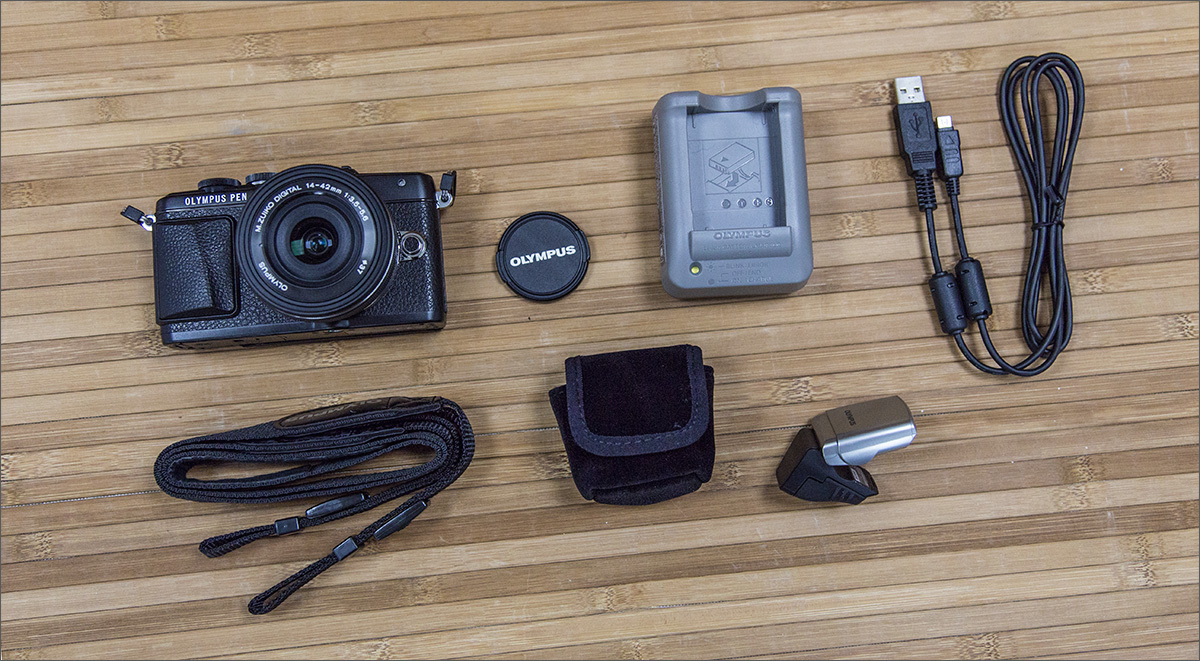
Well, the most detailed user manual, of course, was also present: a book about one centimeter thick.
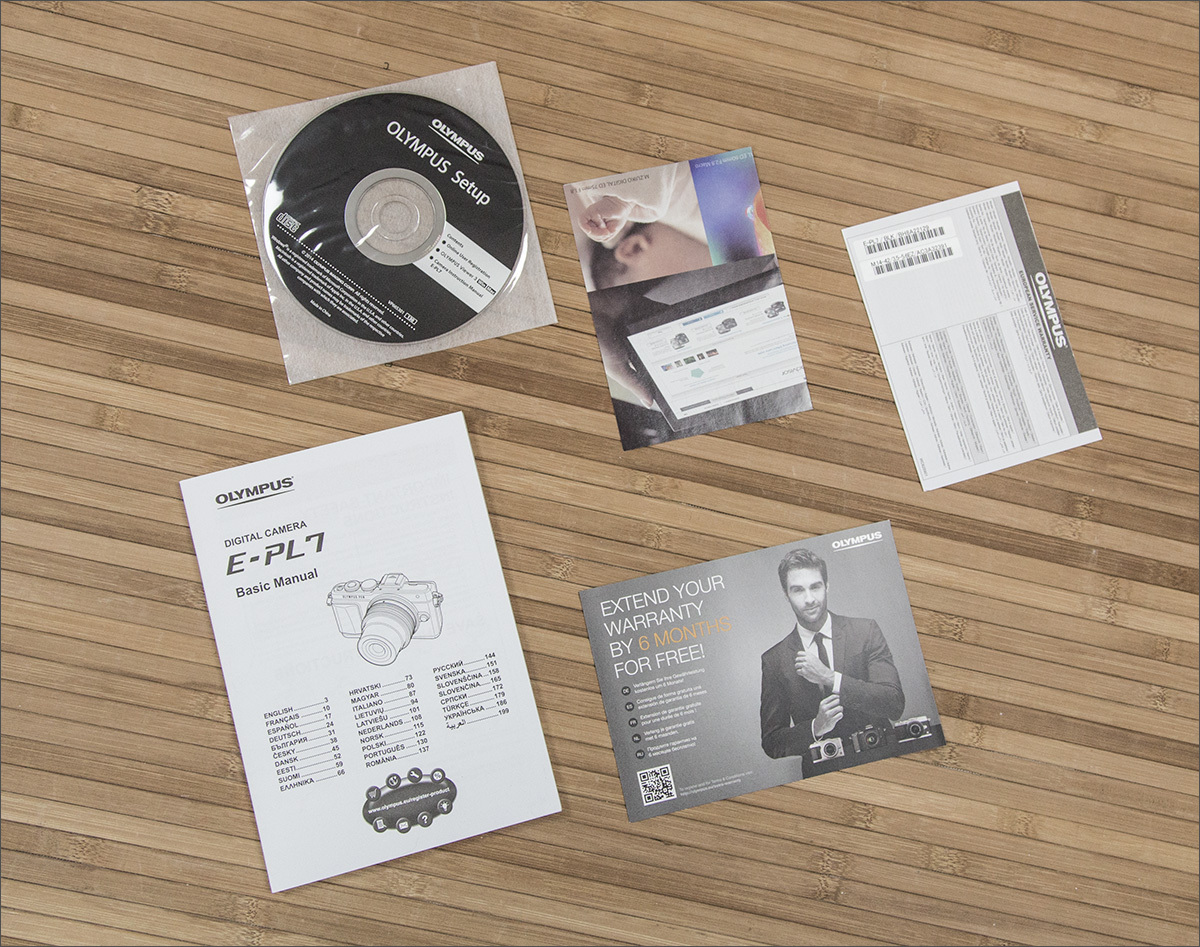
Like many other cameras produced by Olympus, this model has an emphatically vintage design (note: the authors of the camera themselves call it that word, but I prefer the word “retro”) , reproducing the tendencies of the 60-70s - characteristic color and material solutions. large notches on the controls, neat minimalism.

I would say that the design here is most reminiscent of the Bauhaus school of architecture: what is utilitarian, convenient, and beautiful.

A similar design in Olympus cameras is applied from the very first mirrorless, and I hope this tradition will not be interrupted in the future.
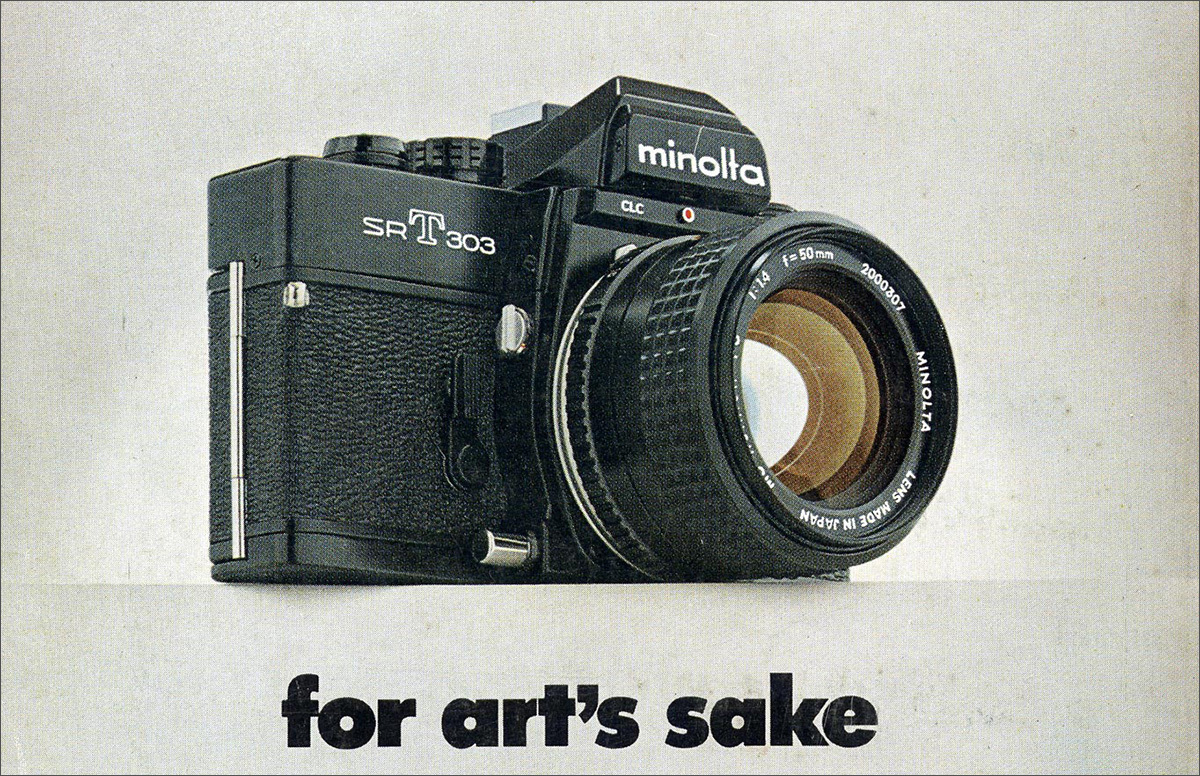
Moreover, commercially it seems to be beneficial, given the general fashion on retro. The dimensions of the E-PL7 may seem to someone too small - 115x67x38, and this with a weight of just under 500 grams. Indeed, for people with wide palms at first it can be uncomfortable, but thanks to the correct geometry, good layout and equally successful weight distribution, it is easy to get used to it, after which the dimensions cease to matter.
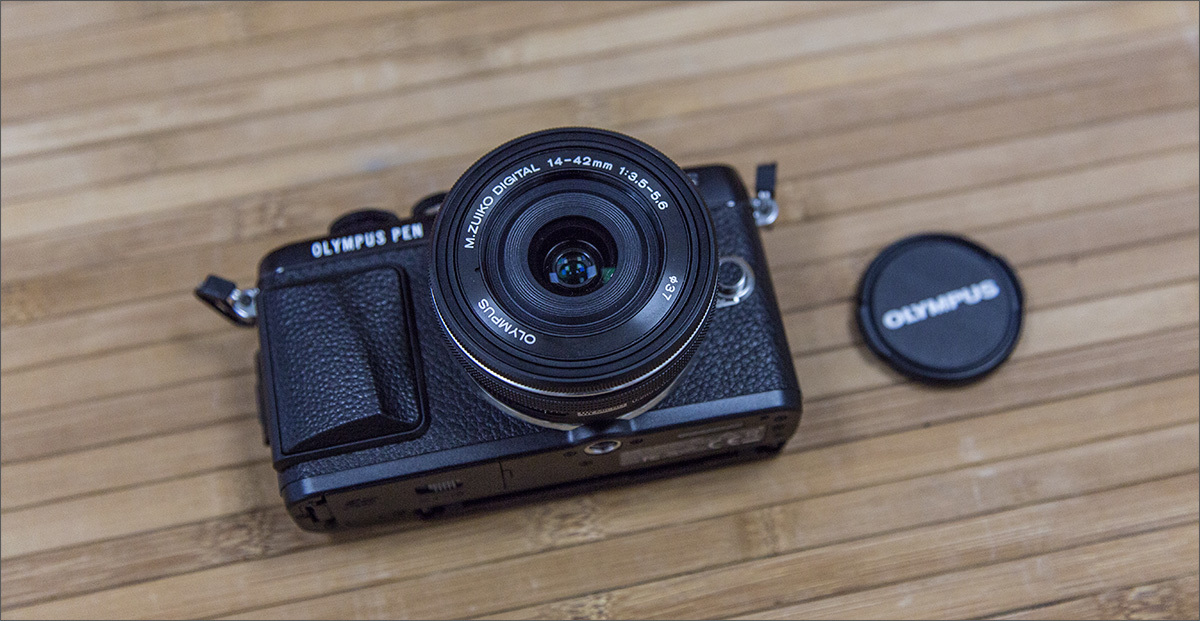
Olympus E-PL7 can be found in two colors - black and white (at first it was planned to supplement the line with red and blue, but for the sake of tradition in design, the developers refused this thought). Well, since there are white cameras for girls, we had a strict black version on the test.
The main controls are parted, as usual, on the top face and the back panel. On the latter, in addition to the swiveling rotary screen, there are two zoom buttons, a video recording button, a multifunctional programmable button, and buttons for working with images and displaying the main menu.
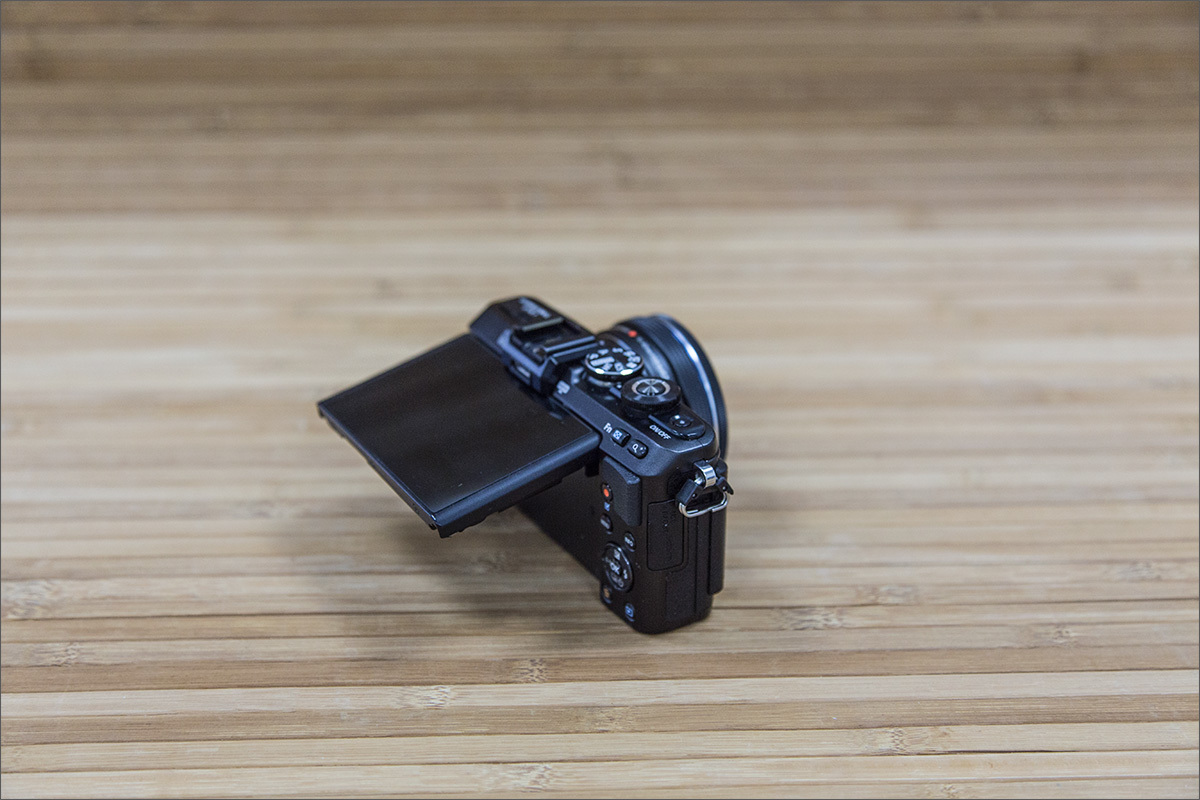
The screen, as mentioned above, has a sensor substrate. Fingers are listening perfectly well, although icons and menus are still too small to make it really convenient to control the device in this way, but the developer is not a fool, and the sensor is practically not used in the menu. Great, we will use the buttons, good, the D-pad is pressed just fine.

It is accurate, the feeling of a “click” is made exactly the way you expect it to feel, blindly finding the right controls is easier than ever. Well, going back to the issue of touch control - even if the capabilities of touch control are not put at the head of the table, but where you can “poke” into the display and get a result - everything works very, very cool. Especially when shooting. Finally, it is worth noting that the screen has a resolution of 460 * 1037 pixels, and its rotating mechanism allows you to rotate it 90 degrees up and 180 - down.

On the right side of the device are microUSB and microHDMI connectors, hidden under a rubber anti-dust plug. Here is also a ring for fastening the strap.
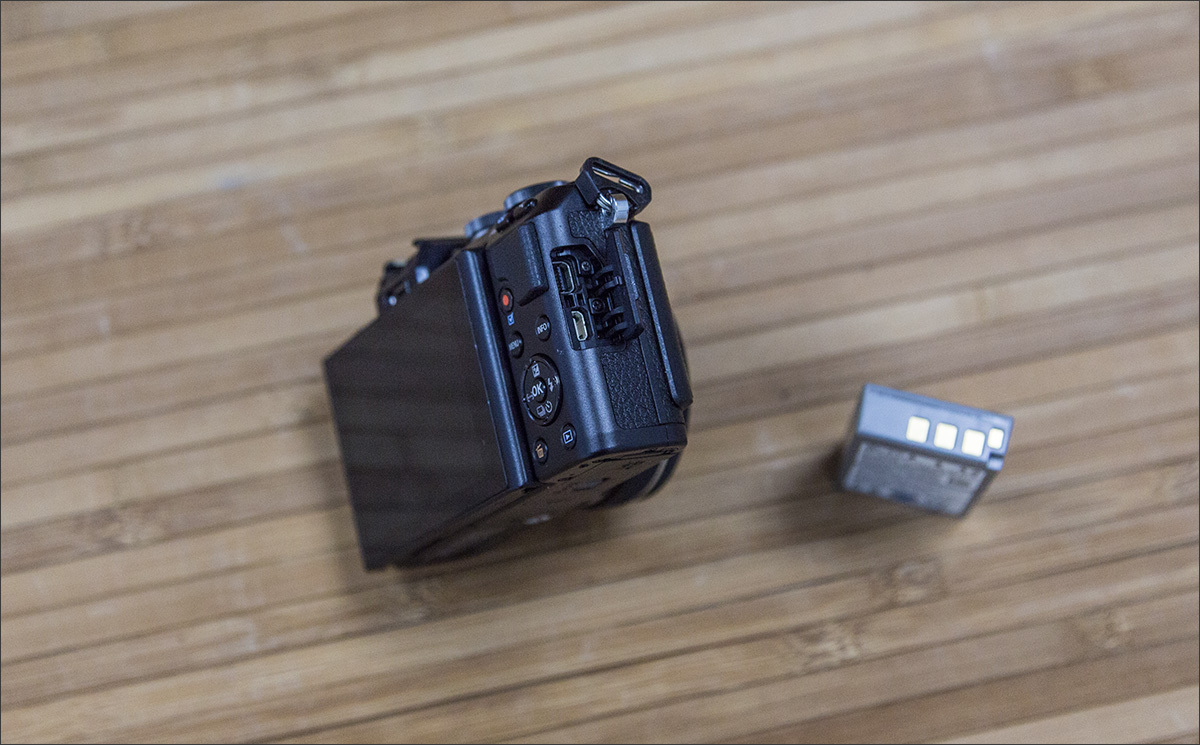
On the top edge are the speaker and microphone, a connector for an external flash, which is carefully closed with a complete lid, as well as a toggle switch for selecting ready-made shooting modes, a power button and a shutter button.
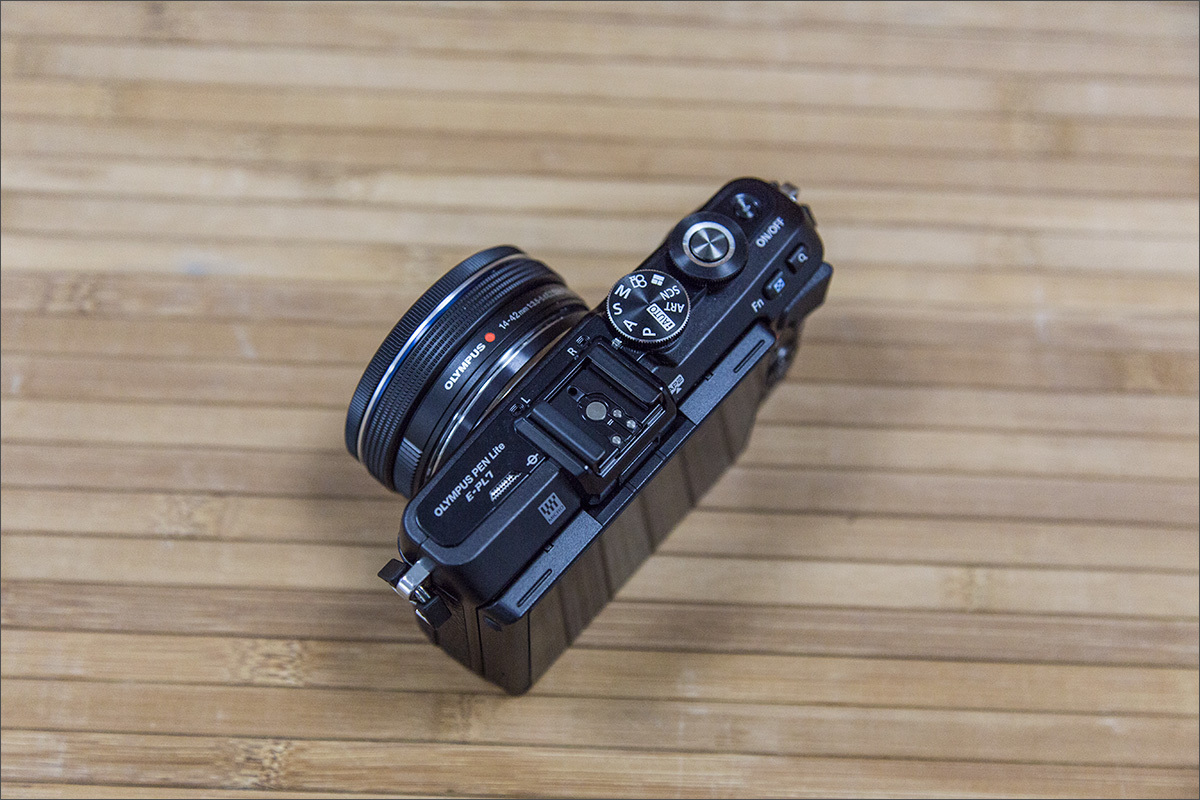
Below, in addition to the thread for the tripod, there is a compartment for the battery and one slot for a memory card. Finally, on the “front” of the device, next to the lens, there is a backlight (for autofocus) and a flash eject button (recall that there is no default flash in the E-PL7, but the removable one is included).
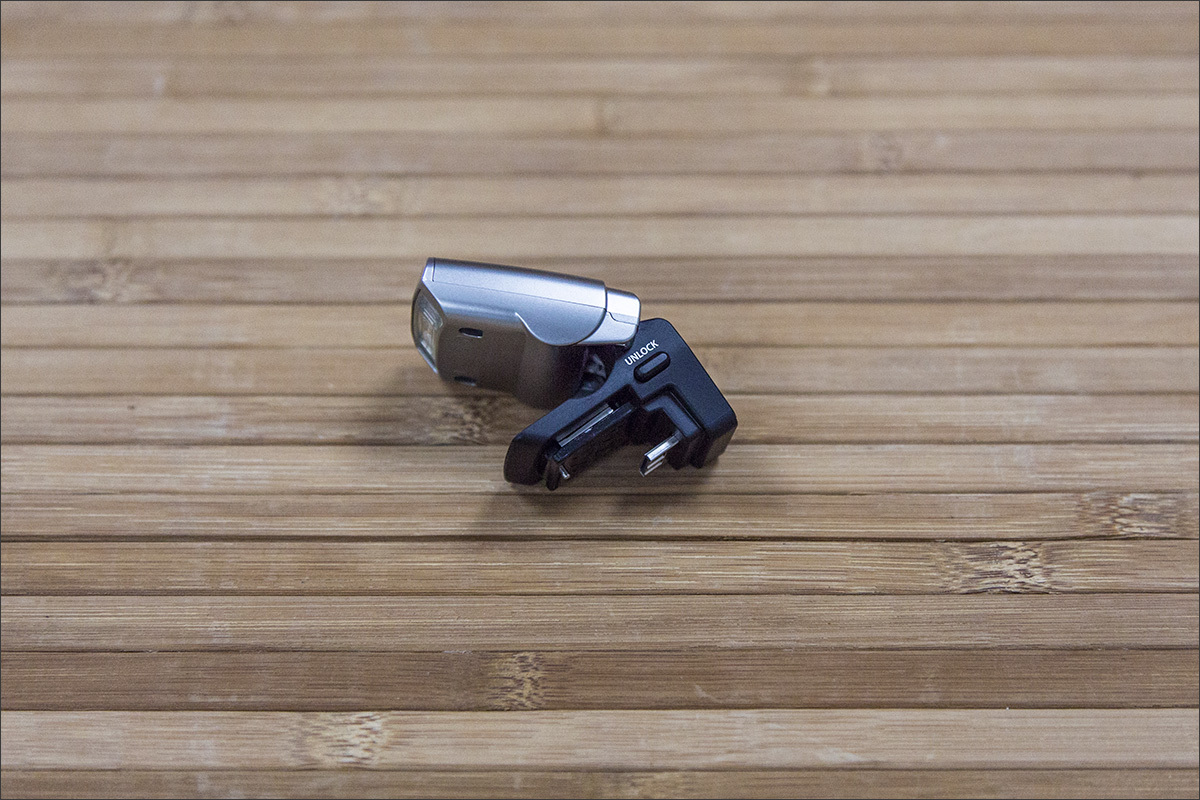
The camera can be arbitrarily compact, or, conversely, massive, but if its weight and center of gravity are chosen poorly for the size and shape of the body - then write it is gone. Neither convenient buttons nor quality materials will save. E-PL7 with a whale lens in this regard, if not perfect, then very close to this state.
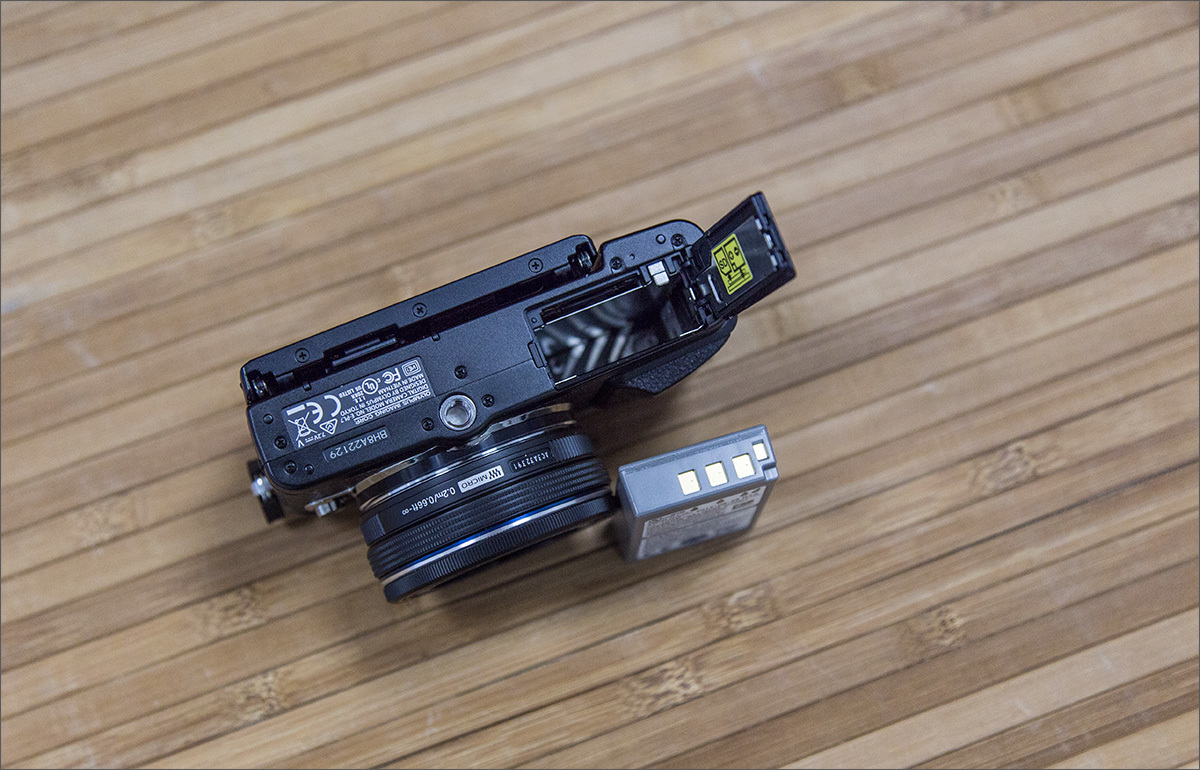
With this camera, you can easily remove even with one hand, even with two fingers - it is very convenient if you need to take a picture with an outstretched hand over your head or slip the device somewhere in a narrow place. The pivoting screen is there, the small size and the good move of the shutter button are there.

By the way, I used the previous Olympus (E-PL6), and I simply cannot note the fact that, in general, the ergonomics and the layout of the controls have improved so much that I just want to get rid of E-PL6. So, the zoom buttons are shifted to the right, so that the folding display will not interfere with their use. Well, the fact that the keys for viewing and scaling of already saved images are now located on the right and not on the left - I don't even want to discuss.
Once again to the question of how the camera sits in your hand. Of course, for those who are accustomed to massive DSLRs or 35 mm “compact” cameras, the E-PL7 will seem just a child's toy: it weighs nothing and fits in a jacket pocket. In addition, the controls are reduced to fit into the overall scale of this camera. Fortunately, these are impressions of only the first five minutes: in an hour the device seems quite comfortable, and by the end of the day of use you will keep the device confidently and without fear that it will slip out of the palm of your hand.
The first acquaintance with the Olympus E-PL7 left the most favorable impression. The camera is convenient (although “grinding” is needed, like with any gadget), it fits easily into a bag or backpack, does not pull the shoulder when worn on a belt, is easily adjustable, all buttons are turned / pressed simply, but the functionality is impeccable.
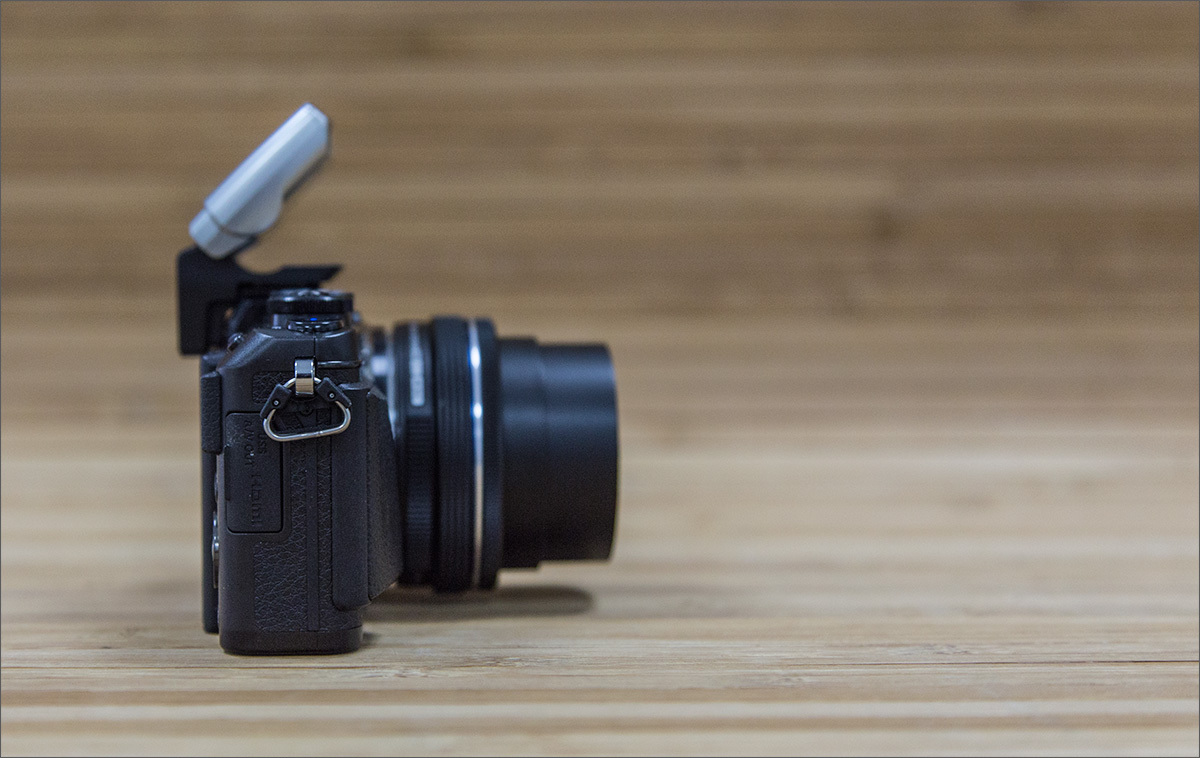
The main impression from the camera is, of course, the focusing system and the “software automaton”. The first is simply amazing, the only camera that (according to my feelings) makes it faster and does not stand as a new car - Canon EOS 7D Mk2. Manufacturers can declare arbitrarily beautiful numbers, in laboratory tests, you can get amazing results, but if you go out to town in the evening, you take out the camera and it takes shots faster than some DSLRs start to move the autofocus motor ... Damn, this is very, very cool. Especially in conjunction with the touch screen, which allows you to “shoot by tap” - where you jabbed, you focused there, and immediately made a ready-made frame.

The second cool “bonus” is optical stabilization. Now she won’t surprise anyone, but it is mirrorless that made her massive in terms of “adult” cameras with excellent picture quality and reasonable prices.
What else is pleased? Display. It gives a good clear picture and has a very good margin of brightness, so that the pictures taken are conveniently viewed both in the dark and in the bright sun. The bundled flash is certainly not a fountain, but it is more likely for those who are just starting their amateur photo journey (and for parents who will use the camera in green mode.

The only more or less objective flaw can be called except, perhaps, the absence of the viewfinder, even if it is electronic. I would not refuse. Well, the camera turns on for a long time, mainly due to the compact mechanism of folding optics.
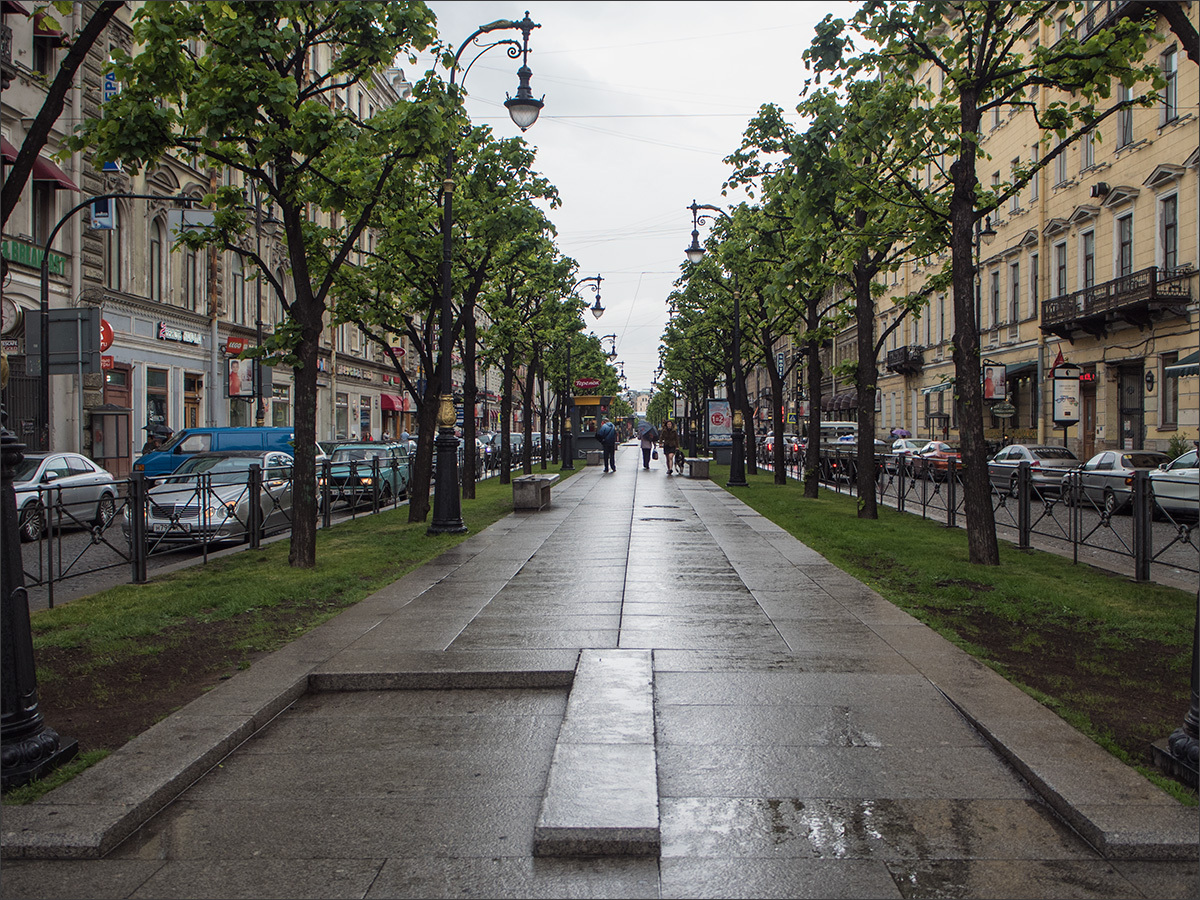
But, of course, the review of the camera does not make any sense, if not accompanied by specific tests. How does the Olympus E-PL7 shoot in different conditions and what it can do in practice, what kind of optics is available, what are the strongest and weakest sides - in the second part, which will be literally in a couple of days. Stay tuned!
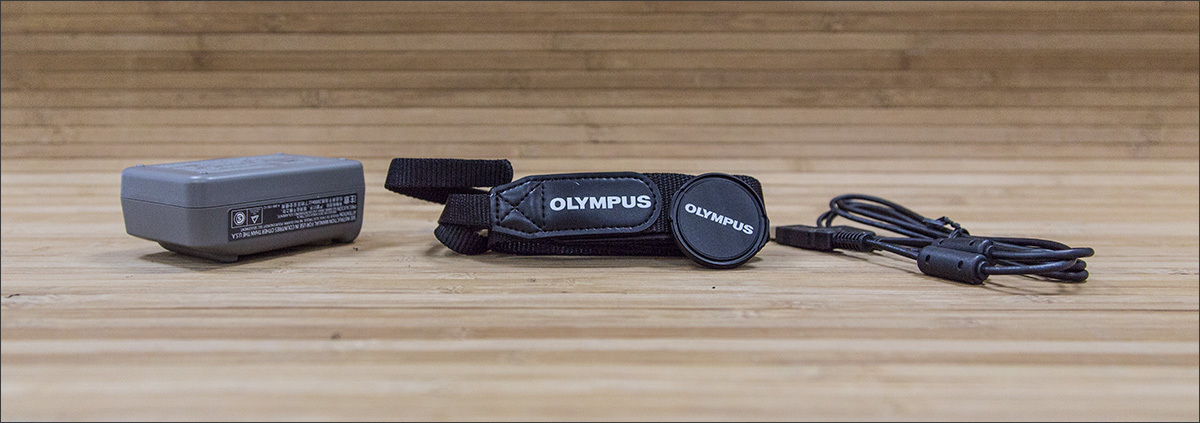
Health geek:
What to do if the sound is too low and how to keep your ears from getting too loud
» Health Geek: Coffeeman right
How not to sour to old age
Computer health:
» Proper nutrition
Our reviews:
» Logitech G27: When I Want to Behind the Wheel of a Sportscar, Part 1 , Part 2
» Connect original gamepads to PC
» Razer Abyssus: the most affordable Razer
Nikon 1 S2: one-button mirrorless
» Lenovo Miix 3-1030 Review
»We understand the art-chaos of the company Wacom
» ASUS Transformer Pad

In fairness it is necessary to restore the balance. Today our guest is the Olympus Pen E-PL7 Kit . After entering the market at the end of last year, it became one of the mass models of the company and earned a good reputation among professional photographers and not only. Excellent retro design, excellent ergonomics, a common format for Micro 4/3 lenses. A good claim to success? So check it out.
In essence, the novelty is in many ways similar to the previous model of the ruler, but at the same time it has a number of very interesting features, which speaks of it as a self-valuable device. If we evaluate the improvements purely in terms of ergonomics and qualitative changes, then first of all you need to talk about the new screen. The camera received a rotatable (270 degrees) touchscreen display, which is extremely useful
')
Positioning and iron
By itself, the E-PL7 is far from the most expensive camera of the Olympus, moreover, it belongs to the line of budget mirrorless cameras. Here is what our camera has inside:
| Matrix | 4/3 "17.2 MPiks (effective - 16.1) |
| Sensitivity | 100-25 600 ISO in increments of ⅓ EV |
| Exposure range | 1/4000 - 60 seconds in increments of ⅓, ½, 1 EV |
| Supported Image Formats | JPEG, 12-bit RAW, MOV, AVI |
| Maximum shooting resolution | Photo: 4608 × 3456, Video: 1920 × 1080 |
| Optical stabilization | Three Axis Shift Matrix |
| Autofocus | Hybrid, phase-contrast, at 81 points. |
| Power supply | Li-ion BLS-50, 8.7 W * h |
| Interfaces | HDMI, USB, A / V-out, WiFi |
| Dimensions and weight | 115 × 67 × 38.5 mm, 359 grams without a lens, with batteries and a memory card. |
Unification with older models “made” them to share both the new processor, and the focusing system, and optical stabilization. The latter, however, somewhat diminished the possibilities in the process of traveling from the flagships to the modelcars easier, but still very, very good.

Complete set, appearance
The Olympus Pen E-PL7 is quite familiar for this type of camera. In the box, along with the hero of the review and its integral components - the charger, battery, lens - we found: USB cable, cover, shoulder strap, external flash (the E-PL7 doesn’t have a standard flash ), CD with software.

Well, the most detailed user manual, of course, was also present: a book about one centimeter thick.

Like many other cameras produced by Olympus, this model has an emphatically vintage design (note: the authors of the camera themselves call it that word, but I prefer the word “retro”) , reproducing the tendencies of the 60-70s - characteristic color and material solutions. large notches on the controls, neat minimalism.

I would say that the design here is most reminiscent of the Bauhaus school of architecture: what is utilitarian, convenient, and beautiful.

A similar design in Olympus cameras is applied from the very first mirrorless, and I hope this tradition will not be interrupted in the future.

Moreover, commercially it seems to be beneficial, given the general fashion on retro. The dimensions of the E-PL7 may seem to someone too small - 115x67x38, and this with a weight of just under 500 grams. Indeed, for people with wide palms at first it can be uncomfortable, but thanks to the correct geometry, good layout and equally successful weight distribution, it is easy to get used to it, after which the dimensions cease to matter.

Olympus E-PL7 can be found in two colors - black and white (at first it was planned to supplement the line with red and blue, but for the sake of tradition in design, the developers refused this thought). Well, since there are white cameras for girls, we had a strict black version on the test.
Controls and screen
The main controls are parted, as usual, on the top face and the back panel. On the latter, in addition to the swiveling rotary screen, there are two zoom buttons, a video recording button, a multifunctional programmable button, and buttons for working with images and displaying the main menu.

The screen, as mentioned above, has a sensor substrate. Fingers are listening perfectly well, although icons and menus are still too small to make it really convenient to control the device in this way, but the developer is not a fool, and the sensor is practically not used in the menu. Great, we will use the buttons, good, the D-pad is pressed just fine.

It is accurate, the feeling of a “click” is made exactly the way you expect it to feel, blindly finding the right controls is easier than ever. Well, going back to the issue of touch control - even if the capabilities of touch control are not put at the head of the table, but where you can “poke” into the display and get a result - everything works very, very cool. Especially when shooting. Finally, it is worth noting that the screen has a resolution of 460 * 1037 pixels, and its rotating mechanism allows you to rotate it 90 degrees up and 180 - down.

On the right side of the device are microUSB and microHDMI connectors, hidden under a rubber anti-dust plug. Here is also a ring for fastening the strap.

On the top edge are the speaker and microphone, a connector for an external flash, which is carefully closed with a complete lid, as well as a toggle switch for selecting ready-made shooting modes, a power button and a shutter button.

Below, in addition to the thread for the tripod, there is a compartment for the battery and one slot for a memory card. Finally, on the “front” of the device, next to the lens, there is a backlight (for autofocus) and a flash eject button (recall that there is no default flash in the E-PL7, but the removable one is included).

Ergonomics
The camera can be arbitrarily compact, or, conversely, massive, but if its weight and center of gravity are chosen poorly for the size and shape of the body - then write it is gone. Neither convenient buttons nor quality materials will save. E-PL7 with a whale lens in this regard, if not perfect, then very close to this state.

With this camera, you can easily remove even with one hand, even with two fingers - it is very convenient if you need to take a picture with an outstretched hand over your head or slip the device somewhere in a narrow place. The pivoting screen is there, the small size and the good move of the shutter button are there.

By the way, I used the previous Olympus (E-PL6), and I simply cannot note the fact that, in general, the ergonomics and the layout of the controls have improved so much that I just want to get rid of E-PL6. So, the zoom buttons are shifted to the right, so that the folding display will not interfere with their use. Well, the fact that the keys for viewing and scaling of already saved images are now located on the right and not on the left - I don't even want to discuss.
Once again to the question of how the camera sits in your hand. Of course, for those who are accustomed to massive DSLRs or 35 mm “compact” cameras, the E-PL7 will seem just a child's toy: it weighs nothing and fits in a jacket pocket. In addition, the controls are reduced to fit into the overall scale of this camera. Fortunately, these are impressions of only the first five minutes: in an hour the device seems quite comfortable, and by the end of the day of use you will keep the device confidently and without fear that it will slip out of the palm of your hand.
Impressions of work
The first acquaintance with the Olympus E-PL7 left the most favorable impression. The camera is convenient (although “grinding” is needed, like with any gadget), it fits easily into a bag or backpack, does not pull the shoulder when worn on a belt, is easily adjustable, all buttons are turned / pressed simply, but the functionality is impeccable.

The main impression from the camera is, of course, the focusing system and the “software automaton”. The first is simply amazing, the only camera that (according to my feelings) makes it faster and does not stand as a new car - Canon EOS 7D Mk2. Manufacturers can declare arbitrarily beautiful numbers, in laboratory tests, you can get amazing results, but if you go out to town in the evening, you take out the camera and it takes shots faster than some DSLRs start to move the autofocus motor ... Damn, this is very, very cool. Especially in conjunction with the touch screen, which allows you to “shoot by tap” - where you jabbed, you focused there, and immediately made a ready-made frame.

The second cool “bonus” is optical stabilization. Now she won’t surprise anyone, but it is mirrorless that made her massive in terms of “adult” cameras with excellent picture quality and reasonable prices.
What else is pleased? Display. It gives a good clear picture and has a very good margin of brightness, so that the pictures taken are conveniently viewed both in the dark and in the bright sun. The bundled flash is certainly not a fountain, but it is more likely for those who are just starting their amateur photo journey (and for parents who will use the camera in green mode.

The only more or less objective flaw can be called except, perhaps, the absence of the viewfinder, even if it is electronic. I would not refuse. Well, the camera turns on for a long time, mainly due to the compact mechanism of folding optics.

But, of course, the review of the camera does not make any sense, if not accompanied by specific tests. How does the Olympus E-PL7 shoot in different conditions and what it can do in practice, what kind of optics is available, what are the strongest and weakest sides - in the second part, which will be literally in a couple of days. Stay tuned!

Health geek:
What to do if the sound is too low and how to keep your ears from getting too loud
» Health Geek: Coffeeman right
How not to sour to old age
Computer health:
» Proper nutrition
Our reviews:
» Logitech G27: When I Want to Behind the Wheel of a Sportscar, Part 1 , Part 2
» Connect original gamepads to PC
» Razer Abyssus: the most affordable Razer
Nikon 1 S2: one-button mirrorless
» Lenovo Miix 3-1030 Review
»We understand the art-chaos of the company Wacom
» ASUS Transformer Pad
Source: https://habr.com/ru/post/365711/
All Articles